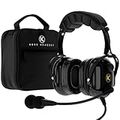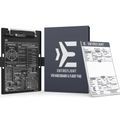Piston Engines vs. Electric Motors: Powering the Future of Light Aircraft
|
Ben Lovegrove
Aviation, aircraft, airlines, air travel, tourism, aerospace, UAM, UAP, AI and Generative AI, and various other related subjects. I've been online since the 1990s and enjoy sharing useful and informative content to a wide audience.
Student Pilot Community Training At All Flight Levels Pilot Institute | Rod Machado | Pilot Store | Advertising | Career Guides Hi Reader, As you log those training hours and dream of the skies, remember that aviation careers extend far beyond the captain's seat on a jet airliner. While many aspire to commercial flying, be it airliners, cargo haulers, or rotary-wing aircraft, plenty thrive in general aviation. Options abound: bush pilots in remote Alaska, banner towers at beach resorts,...
54% OFF David Clark DC ONE-X ENC Headset SHOP NOW ONLY $1,299 Bose A30 Aviation Headset, Lightweight Comfortable Design, Adjus... SHOP NOW ONLY $899 LIGHTSPEED Zulu 3 Premium ANR Aviation Headset with Noise Cancel... SHOP NOW Powered by Pilot Institute | Rod Machado | Pilot Store | Advertising | Career Guides Hi Reader, UK General Aviation Records Fewer Accidents in 2024 Amid Declining Flying Hours The UK's General Aviation sector reported 158 accidents and serious incidents in 2024, well...
5% OFF EntireFlight - Aviation Pilot Kneeboard VFR Black with Structure... SHOP NOW 17% OFF EntireFlight - VFR Notepad for Pilot Knee Board - Accessories fo... SHOP NOW 4% OFF FlyBoys - Classic Kneeboard - For Professional Pilots - Durable... SHOP NOW Powered by Pilot Institute | Rod Machado | Pilot Store | Advertising | Career Guides Hi Reader, Montana Landing Accident Involving Socata TBM-850 A landing accident at Kalispell City Airport in Montana involved a Socata TBM-850 single-engine...


